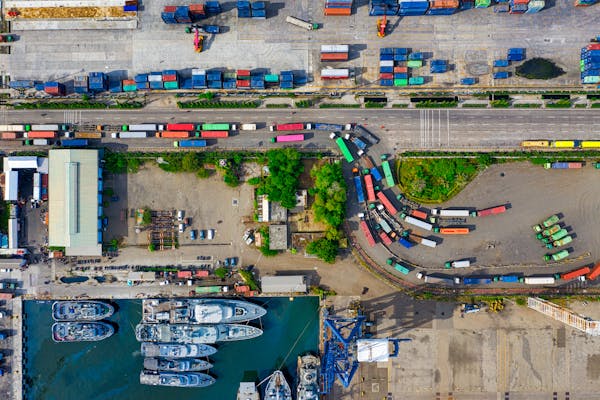Shipping Plastic Corner Protectors from Guangzhou/Shenzhen to Chennai Port, India: Full Container Load (FCL) and Less-than-Container Load (LCL)
Shipping Methods: FCL vs LCL
Full Container Load (FCL): If you have a large shipment of plastic corner protectors, opting for a Full Container Load (FCL) could be the most efficient choice. FCL means that your goods will fill an entire 20-foot or 40-foot container, allowing for direct transportation from the origin port to the destination port. This method reduces handling, which can lead to fewer risks of damage and a faster transit time.
The standard transit time for FCL shipments from Guangzhou or Shenzhen to Chennai is approximately 10 days. In this case, the container is transported directly by sea, ensuring minimal delays and a smooth delivery process.
Less-than-Container Load (LCL): If your shipment volume is smaller, Less-than-Container Load (LCL) might be a more economical choice. With LCL, your plastic corner protectors will be consolidated with goods from other shippers into a shared container. While LCL shipments can be a bit slower than FCL due to the need for consolidation and deconsolidation at the ports, it is ideal for smaller volumes and can save on costs.
The LCL process includes your goods being loaded into a shared container at Guangzhou or Shenzhen. The transit time for LCL from these ports to Chennai also takes around 10 days but may vary depending on the consolidation process and port handling.

Packaging of Plastic Corner Protectors
Proper packaging is crucial to ensuring that the plastic corner protectors arrive at their destination in perfect condition. Here’s how the packaging process is typically handled:
Primary Packaging: The plastic corner protectors are usually individually wrapped in plastic film or bubble wrap to protect them from moisture, dirt, and physical damage. This also helps prevent scratching or deformation during transit.
Secondary Packaging: After individual wrapping, the corner protectors are typically placed in corrugated cardboard boxes. The boxes should be sturdy enough to withstand the rigors of international shipping. It’s important that the boxes are labeled clearly with the product description, weight, dimensions, and destination details.
Palletization (for FCL shipments): For FCL shipments, the boxes containing the plastic corner protectors will often be stacked onto wooden pallets. The pallets help facilitate easy loading and unloading of the goods at the port and minimize the risk of damage during handling. The entire pallet can be wrapped in stretch film to secure the boxes tightly and prevent movement during transit.
Container Loading: In FCL shipping, the packed pallets are loaded into a 20-foot or 40-foot container, depending on the shipment size. The goods should be loaded in a way that maximizes space utilization while ensuring that the load is stable and well-secured.
Labeling: Each package or pallet should have appropriate labels, including details like the consignee’s name and address, the port of discharge (Chennai), and the contents (plastic corner protectors). This ensures smooth customs clearance and makes identification easier throughout the journey.
Seal and Documentation: After loading the container, it will be sealed for security purposes. It’s important to prepare all the necessary shipping documents, such as the commercial invoice, packing list, bill of lading, and certificate of origin, to facilitate smooth clearance at both the Chinese and Indian ports.



